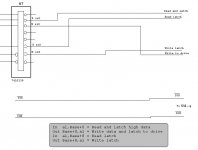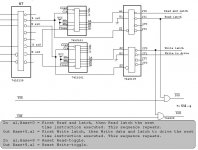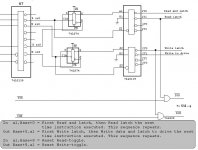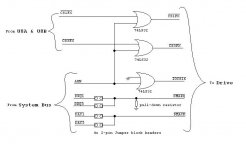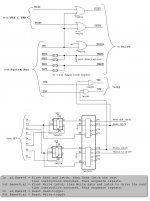hargle
Veteran Member
Here's a utility that will help with this debug.
It has already shown me an error on my system too.
http://www.waste.org/~winkles/int13test.zip
This dumps out the drive parameter table(s) as well as what int 13 fn 48 and 8 report back.
What I need folks to do is take a drive, preferably 10G or less and put it in a modern machine. Run this program and redirect the results to a file.
Do the same on your XT. If the results are different, send them to me.
I've already seen a bug on my end with this tool, and that could very easily be what is causing your problems too. hopefully I can dig in shortly.
---------------------------
Good news!
I've finished card #5 and it worked right out of the shoot.
I also gave a workover to cards #1 and it is now working as expected.
Card #4, the one that was dropping case on the ID string worked at least 1 time tonight (I swear!), but is now back to dropping the characters again. It's really weird indeed.
So I have two cards at the moment that appear to be as good as all the others, and one that works, but works a little wonky.
---------------------------
Bad News!
I have 2 more bad eeproms. Either these SEEQ parts are just really horrible, or I've managed to wreck 3 parts now, possibly due to card #1 being troublesome.
That makes 3 bad eeproms out of 11 that I purchased for this project. (1 went to bob watts)
So, if we get any programming failures in the immediate future from BIOS upgrades, I suggest we dump these SEEQ parts and find something else, like the atmel's that were working just fine from the wire wrap cards.
that's it for me tonight.
It has already shown me an error on my system too.
http://www.waste.org/~winkles/int13test.zip
This dumps out the drive parameter table(s) as well as what int 13 fn 48 and 8 report back.
What I need folks to do is take a drive, preferably 10G or less and put it in a modern machine. Run this program and redirect the results to a file.
Do the same on your XT. If the results are different, send them to me.
I've already seen a bug on my end with this tool, and that could very easily be what is causing your problems too. hopefully I can dig in shortly.
---------------------------
Good news!
I've finished card #5 and it worked right out of the shoot.
I also gave a workover to cards #1 and it is now working as expected.
Card #4, the one that was dropping case on the ID string worked at least 1 time tonight (I swear!), but is now back to dropping the characters again. It's really weird indeed.
So I have two cards at the moment that appear to be as good as all the others, and one that works, but works a little wonky.
---------------------------
Bad News!
I have 2 more bad eeproms. Either these SEEQ parts are just really horrible, or I've managed to wreck 3 parts now, possibly due to card #1 being troublesome.
That makes 3 bad eeproms out of 11 that I purchased for this project. (1 went to bob watts)
So, if we get any programming failures in the immediate future from BIOS upgrades, I suggest we dump these SEEQ parts and find something else, like the atmel's that were working just fine from the wire wrap cards.
that's it for me tonight.
Last edited:

